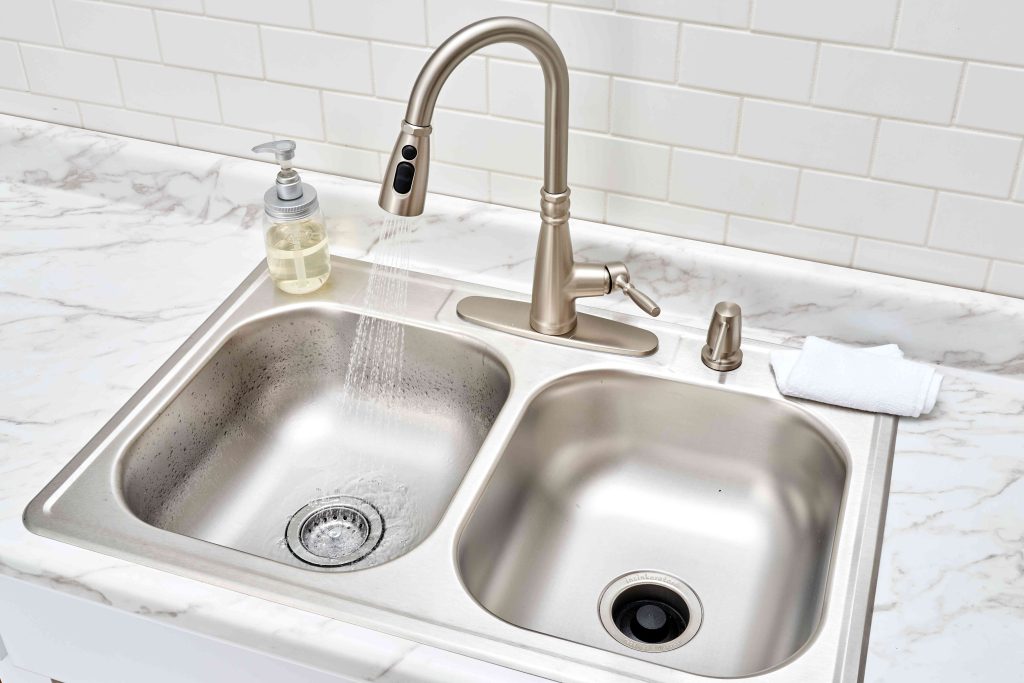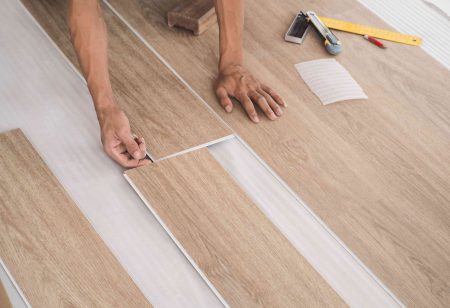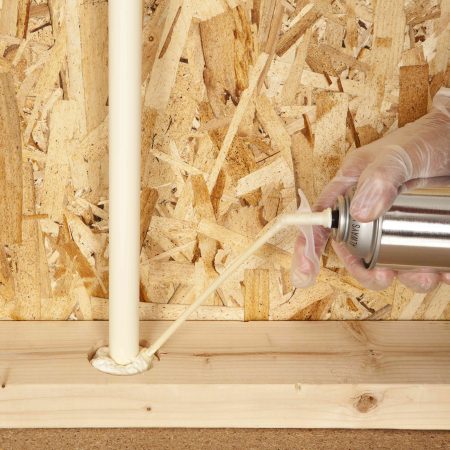You can easily replace that grungy-looking old sink in your kitchen with a nice new sink—and you can do it yourself!
There are two basic styles of sinks: self-rimming (also known as surface-mounted or drop-in) and under-mount sinks. If you have a laminate, tile, or other countertop material that is not solid throughout such as granite or marble, then your sink is self-rimming. The most typical of these installations is a stainless steel sink set on a plastic laminate countertop.
What You’ll Need
Equipment / Tools
- Adjustable wrench
- Channel-type pliers
- Putty knife
- Phillips-head screwdriver
- Flat-head screwdriver
Materials
- A new sink of same opening size
- Plumbers putty or silicone caulk
- Plumber’s tape for threaded plumbing connections
- New plumbing/drain parts as required
Instructions
-
Purchase a Replacement Sink
The easiest way to replace an old sink is to buy a new one of the same size. Assuming the old sink worked for you and its size was adequate, measure the old sink’s inside dimensions—its length, width, and depth. You’ll also need to measure the center-to-center dimension of any holes you have in the sink for faucets and sprayers if you want to replace them.
When you buy the new sink, all that matters is that the drop-in dimension is the same and that you have the number of appropriate sinkholes for the faucet and sprayer. Your home building supply or plumbing store can help you pick the right sink—it’s really easy.
But if you wish, now is the time to upgrade from a faucet having separate hot and cold faucet handles to a single-handle washerless faucet. If so, you’ll want to make sure the hole configuration on the new sink matches the new faucet.
-
Disconnect the Plumbing and Electrical Connections, and Remove the Sink
Before you start disconnecting anything, make sure to turn off the water supply. There should be a water shut-off valve for the hot and cold water located under the sink. If not, then turn the water supply off at the main valve.
If you have a garbage disposal, then unplug it from the power outlet.
Once the water is turned off and the disposal (if you have one) is unplugged, disconnect the hot and cold water connections attached to the tailpieces beneath the sink on the old faucet, using an adjustable wrench.
Disconnect the drain trap from the sink waste drain or garbage disposal, using channel-type pliers.
The sink will be fastened to the countertop with a series of small clips. Simply unscrew the clips from beneath to loosen and remove them. Then carefully lift out the sink with the faucet attached.
-
Prepare the Sink Opening in the Countertop
Once the sink and faucet are lifted out, it will pretty much look like a gaping hole. That’s normal—now is the time to ready the new sink for installation.
Clean the edges of the old sink opening of all old plumbers putty or caulk. Carefully scrape the residual putty or caulk with a putty knife, if necessary. Clean the area with a household surface cleaner.
-
Install the Faucet and Hose Spray in the New Sink
There is no easier time to install the faucet than before the new sink is installed in the countertop. With the sink removed, you can easily reach the back of it, thread the faucet plumbing lines through the sinkholes, and tighten the faucet to the sink. This is all a lot more difficult to do on your back and in cramped quarters after the sink is already installed.
Follow the manufacturer’s installation instructions for installing the faucet. Some manufacturers require you to assemble part of the faucet before installing it on the sink. The manufacturer will usually provide you with a rubber seal to place under the base plate of the faucet and the sink.
-
Place the New Sink Into the Countertop
Once the faucet assembly is attached to the sink, turn your attention to preparing the sink itself.
With the sink still in an upside-down position, place a bead of plumber’s putty or silicone caulk around the complete edge of the sink. Make sure to locate the putty or caulk near the outer edge of the sink so that it will make full contact with the countertop when installed.
Next, flip the sink and attached the faucet assembly upright. Be careful doing this as the sink may be heavy. Also, make sure you don’t ruin the nice putty or caulk job you just completed at the sink’s edge.
Carefully drop the sink into position.
-
Attach the Sink to the Countertop
Once the sink is set in place, it will need to be tightened against the countertop. The sink is pulled tight against the countertop with special mounting clips. The spacing of these clips will vary by manufacturer so follow the instructions that came with it. The clips are generally tightened with a screwdriver or socket from underneath the sink. Tighten the clips a little at a time going around the sink perimeter a few times.
As the clips are tightened down, they draw the sink tight against the countertop creating a self-rimming seal.
Clean up any putty or caulk that squeezed out from the bottom of the sink edge as it was tightened down.
-
Make the Final Connections
Once the sink is firmly fastened down, install the sink strainer. Or, if you have a garbage disposal, install the garbage disposal sink flange and mounting ring. The sink strainer/basket assembly and the disposal sink flange will mount similarly.
Seal the sink opening with a 1/2-inch bead of plumber’s putty around the opening.
Place the new disposal sink flange or sink strainer assembly into the sink opening and press it into the plumber’s putty. Tighten from below until the putty squeezes out and the flange is tight against the sink.
Hook up the waste drain lines and water supply lines. Make sure the threaded connections are tight and be sure to use plumber’s tape on all threaded connections to prevent leakage.
Turn on the water supply, and check for and correct any leaks.
Once the plumbing connections are made, plug the garbage disposal into the electrical outlet and test for proper operation.
Now enjoy that beautiful new sink and faucet!
Read the full article here














